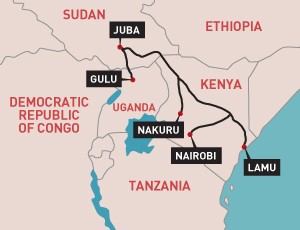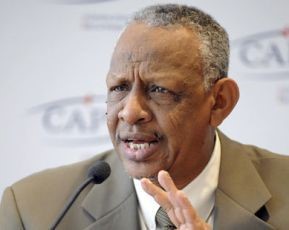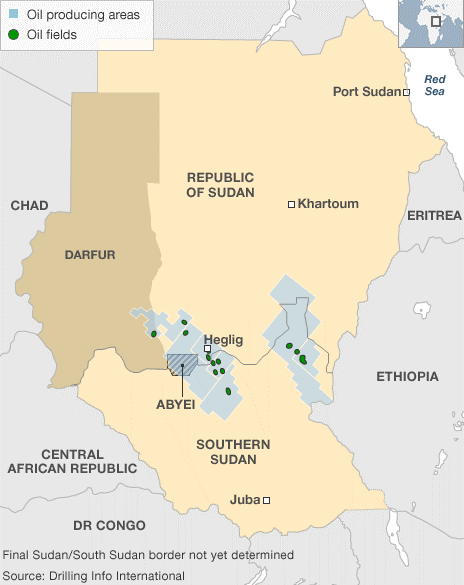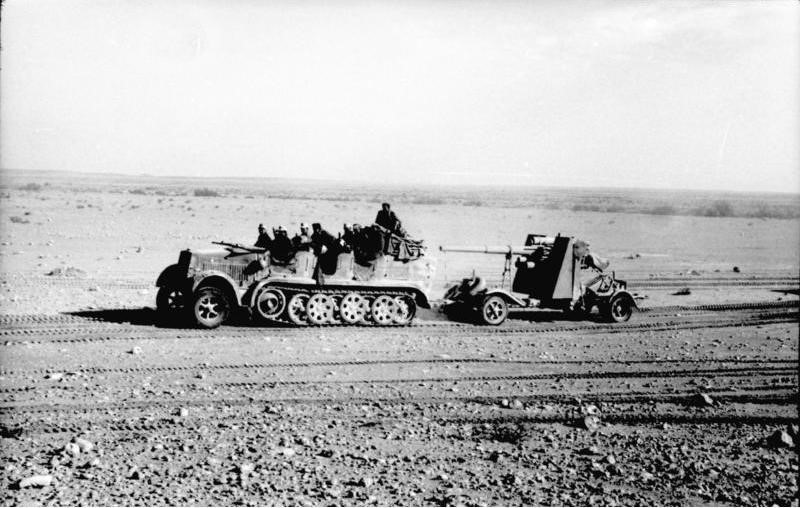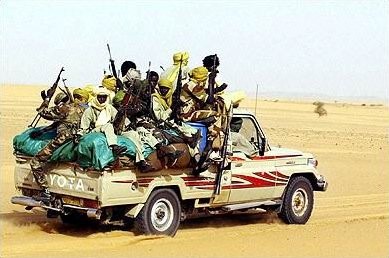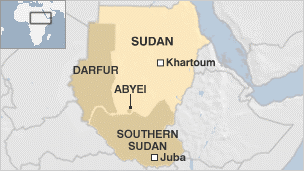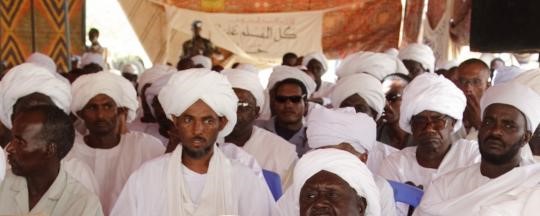Andrew McGregor
October 31, 2013
Even as Libya descended into post-revolution political chaos, its vital oil industry made a rapid and surprising recovery, aided partly by the reluctance of both sides in the revolutionary struggle to damage or destroy the nation’s energy infrastructure. Today, however, Libya’s oil industry is largely paralyzed as it falls prey to post-revolution political maneuvering, especially in Libya’s eastern region of Cyrenaica. In September, production fell to 300,000 barrels per day, the lowest output since the 2011 anti-Qaddafi revolution.

A strike by armed guards in the oil fields that began in July developed into a general blockade of large parts of Libya’s oil production facilities that was joined by other armed groups and individuals as the rest of the country was forced to import enough fuel to meet its own needs. In Cyrenaica, the original economic causes of the strikes have been joined by new demands for an autonomous Cyrenaica within a federal Libya. Libya’s capital, Tripoli, located in western Libya, has experienced power blackouts and water cuts (al-Sharq al-Awsat, October 7).
A New Government for Cyrenaica
There has been talk of establishing an autonomous Cyrenaica since the overthrow of former president Mu’ammar Qaddafi, with much of the discussion revolving around the role of the tribally-based Cyrenaica Transitional Council (CTC) and its titular leader, Ahmad Zubayr al-Sanusi, a great-nephew of King Idris al-Sanusi who served 31 years in the regime’s worst prisons after failing to overthrow the young Colonel Qaddafi in a 1970 plot. Official neglect of Cyrenaica dates from the early years of Mu’ammar Qaddafi’s rule, when he survived several plots organized by royalists and other factions from Cyrenaica.
The first major step in establishing Cyrenaica’s autonomy was the declaration of self-governance for the region by the Cyrenaica National Council within a (non-existent) federal Libya on June 1 (all questions regarding the nature of the future Libyan state have yet to be decided by a constitutional committee). However, al-Sanusi’s faction of the CTC was displaced by a younger group of secessionists who rallied around former militia commander Ibrahim al-Jadhran, a former rebel commander who became leader of a newly formed Political Bureau designed to advocate for Cyrenaican autonomy on August 17.
The newly declared autonomous state, to be known by its Arabic name, Barqa, corresponds to the old state of Cyrenaica, constituting the eastern half of Libya at the time of its independence in 1951. North-western Tripolitania and the south-western desert state of Fezzan formed the rest of Libya. In 1963, the three states were re-divided into ten new provinces, bringing an end, administratively at least, to Cyrenaica. The secessionists do not recognize any inconvenient changes to the original 1951 constitution. The revived region will be divided administratively into four provinces, Benghazi, Tobruk, Ajdabiya and Jebel Akhdar, each being run by a ten-person management team (Libya Herald, October 25).
Ibrahim al-Jadhran, a 33-year-old who makes his headquarters in Ajdabiya, is reported to have spent seven years in Qaddafi’s notorious Abu Salim prison before becoming a successful battalion commander in Cyrenaica during the revolution. Al-Jadhran’s reward was to be appointed chief of the Petroleum Facilities Guards (PFG) in eastern Libya, a powerful and potentially lucrative post. The PFG is overseen by Libya’s Defense Ministry but funded by the Oil Ministry.
Al-Jadhran has since been dismissed from the PFG and an arrest warrant issued for insubordination in August (Bloomberg, October 1). In a recent interview, Jadhran described the ongoing political process as unavoidable:
We have already declared our independence financially… After being ignored and neglected by the current government, we need to be free to create our own administration and to be in charge of our own budgets. Autonomy is the only way to get our proper rights and cast off this oppression (Petroleum Economist, October 8).
On October 2, the secessionists announced the appointment of Abd Rabo Abd al-Hamid al-Barasi as the head of the executive bureau, to be located in al-Bayda, as well as the appointment of Colonel Najib Sulayman al-Hasi as commander-in-chief of a projected 20,000-man Barqa defense force (drawn largely from the 17,000 petroleum guards and militia members that have joined them), based in the town of Brega. The force will be tasked with the protection of Cyrenaican oil facilities and securing the cities of Derna and Benghazi in order to halt the ongoing bombing and assassination campaigns. The appointees were viewed as being the choices of Ibrahim Jadhran.
Officials of the self-proclaimed government have maintained that the move to establish a new administration in Cyrenaica is not an effort to take sole control of the majority of Libya’s oil resources. According to Abd Rabo al-Barasi: “We only want Barqa’s share according to the 1951 constitution” (Libya Herald, October 25). Elsewhere, al-Barasi has said: “The aim of the regional government is to share resources in a better fashion, and to end the centralized system adopted by the authorities in Tripoli” (Arab News, October 25). After security has been restored in the cities of Derna and Benghazi, where over 80 people, including prominent members of the security forces, have been assassinated in the last year alone, the new administration has promised it will focus on attracting new investment to the region.
There is a tribal dimension to the dispute between al-Jadhran and the GNC; al-Jadhran and his brother Salim are both members of the Magharba tribe, a large and influential group that occupies the most productive oil fields in Cyrenaica. The GNC worries about alienating the entire tribe if it takes firm measures with al-Jadhran (Bloomberg, October 1). PFG commander Bukhamada also cites a challenge to national unity inherent in any attempt to dislodge the rebellious guard leader: “On a purely military level, of course the Ministry of Defence could easily defeat Jathran’s men, but politically the situation is very difficult. If troops are sent in from the west, that would only help to further unite the tribes of the east against the government” (Petroleum Economist, October 8). In some cases, secessionists and other Cyrenaican opponents of the central government in Tripoli have exploited the fear of civil war to warn against government-sponsored military operations to reclaim the oil fields of the east. Al-Jadhran and others also like to characterize the Tripoli government as being controlled by the Muslim Brotherhood to discredit their efforts to regain control of the east (Reuters, October 27; Petroleum Economist, October 8). Local Islamists in Benghazi, in turn, regard al-Jadhran as a tribalist who is pulling Libya backwards in order to strengthen the Magharba (Reuters, October 27).
A spokesman for the GNC said that the declaration of a “so-called Cyrenaica Region” was illegal (Libya Herald, October 25). While criticizing central authorities for “incompetence and corruption,” al-Barasi, with little explanation, maintains the new government in Cyrenaica represents “not a secession movement, but a movement for Libya… Cyrenaica is the start and the aim is Libya” (Libya Herald, October 25).
Independence for the Fezzan?
The desire for autonomy within Libya has also spread to Libya’s sparsely inhabited south-western region, the Fezzan, a land of remorseless desert punctuated with a few oases and several vital trade routes into the African interior.
In late September, Fezzani elders from Sabha, Waddan, Wadi al-Shatti, Jufra and Obari met in Obari to discuss “the inability of the government to meet public requirements, especially in the Fezzan region,” according to a statement issued by the gathering (Libya Herald, September 27). The statement went on to say that a new, autonomous administration would be headed by a military governor. The Fezzani autonomy movement seems to be dominated by Arabs at present, with little support from Tuareg and Tubu residents of the region. Support is far from universal even within Fezzan’s Arab community, especially within Sabha, the regional capital and home to a major military base during the Qaddafi-era.
Libyan reports carried throughout the Middle East claimed that delegates declared Fezzan to be an autonomous federal province of Libya with Nuri Muhammad al-Qouizi as its president (al-Arabiya, September 26). The Sabha Local Council said it did not recognize the decision as the members of the elders’ council that made the decision had not consulted with the people or institutions of the region (Libya Herald, September 28).
Shutting Down the Oil Industry
Jadhran’s followers now control approximately 60% of the nation’s oil wealth. Among the closed terminals are Libya’s two most important, al-Sider and Ras-Lanuf, both located in the Libyan east (UPI, September 27). Protests at the terminals that began in August over pay issues eventually merged with demands for Libyan federalism (al-Sharq al-Awsat, October 7). The head of the Libyan parliament’s energy committee, Naji Mokhtar, has admitted paying $2 million of his own funds to an unnamed leading member of the PFG to help open the oil terminals, though he characterized it as a mediation effort rather than a bribe: “Exceptional times call for exceptional measures… I went to them thinking they would have a sense of patriotism” (Bloomberg, September 24).

Petroleum Facilities Guards (PFG)
In Tobruk, where local leaders favor national unity over Cyrenaican autonomy (while still insisting on certain political concessions), Prime Minister Ali Zeidan was able to announce the reopening of the Marsa Hariga terminal on October 28 (Libya Herald, October 28). On the same day, however, Tuareg protesters demanding national ID numbers (to clarify their Libyan citizenship) and official recognition for their language seized and shut down the Sharara oilfield in Obari (Fezzan) and a closure of the Mellitah terminal (run jointly by Eni and Libya’s National Oil Corporation – NOC) entered a second day after roughly 80 Berber gunmen from the north-western port city of Zuwara seized the terminal by means of an amphibious assault to press their demands for greater representation in the constitutional committee (Libya Herald, October 28). Embarrassingly, Zuwara is the hometown of Nuri Abu Sahmain, the chairman of the GNC (see Terrorism Monitor Brief, July 11). The Sharara oilfield had only just resumed pumping operations on September 16 after the Sharara, al-Fil and Hamada pipelines were shut down by the Zintan militia (Libya Herald, September 16). A September 4 announcement of a 20% hike in public sector salaries, including oil facility guards, failed to have any significant impact on the strikes (al-Sharq al-Awsat, October 7).
Reported attempts by the strikers and petroleum guards to sell oil on the black market led Prime Minister Ali Zeidan to warn in mid-August that: “Any vessel not under contract to the National Oil Company that approaches the terminals will be bombed from the air and sea” (Tripoli Post, August 17). Al-Jadhran does not express concern with these threats, saying: “We’ve got access to boats and we’re ready to offer tankers military escorts to help protect them from government forces” (Petroleum Economist, October 8).
It is a measure of the weakness of the GNC that it only decided this month to stop paying striking guards of the 21,000 man PFG who were blockading outbound flows of oil and gas. Such measures have had some success: in central Libya, PFG commander Brigadier Idris Bukhamada ordered all PFG members to re-enlist and accept government authority or forfeit their salaries – some 2,000 of the 3,000 guards quickly complied (Bloomberg, October 1). In the east, however, there are other factors at work, including political motivations and the possibility of alternate sources of income, either through illegal petroleum sales or “donations” from various interested parties in the oil industry, such as shippers, traders or rival oil companies.
ExxonMobil, a minor player in Libya with offshore operations, announced on September 17 that security concerns were forcing it to reduce staff and operations in Libya. Italian oil firm Eni and American Marathon have both suffered losses during the disruptions that have cost Libya an estimated $5 billion so far this year. Marathon has indicated its interest in selling its 16.3% stake in Waha Oil, Libya’s largest foreign partnership (Reuters, September 17; Libya Herald, October 3).
Italy’s Eni, which runs the largest energy operations in Libya, has suffered from a month-long and ongoing shutdown of its Wafa field in western Libya, near the Algerian border. In this case, Wafa, which supplies gas to Italy through two trans-Mediterranean pipelines, was shut down by strikers seeking financial rather than political aims and who saw the ongoing turmoil in energy fields elsewhere in Libya as an opportune time to take action (Gulf Times, October 25; Libya Herald, September 29).
Conclusion
The turmoil in the oil fields has forced the GNC to dip into Libya’s financial reserves to maintain the most basic government services, with fears that the government may soon be unable to pay government employees if the situation is not reversed soon. There are reports that many mid-level officials and administrators have already decided to resign and leave the country (al-Sharq al-Awsat, October 23). There are also an estimated 225,000 militia members receiving government salaries in return for their “loyalty” to the GNC. Their commitment to the GNC, already fairly shallow (and in some cases non-existent) will be severely challenged by any interference with their paychecks.
Libya’s central government has made almost no progress in building a national defense structure that would allow it to enforce its writ without the cooperation (at a price) of Libya’s militias. Without a national security force of any significance, Libya’s ruling GNC simply does not have the means of dealing with powerful militia leaders who decide to impose their own direction on the nation. However, the GNC and Libya’s oil ministry are not entirely blameless in this affair – dubious practices such as loading oil tankers without the use of meters to measure the size of the shipment and awarding export contracts without going through proper channels have been cited by oil facilities guards as cause for their takeover of major oil terminals (Tripoli Post, August 17). Dr. Abd al-Bari Ali al-Arousi, Libya’s Minister of Oil and Gas, is frequently cited by the strikers as a corrupt influence in the Ministry. Prime Minister Zeidan is also widely viewed as having failed to address security concerns in Libya or make any progress in reining in Libya’s militias and rebellious petroleum guards, leading to the August 18 resignation of Interior Minister Muhammad al-Shaykh, who cited lack of support from the prime minister during his three months on the job (al-Jazeera, August 18).
Questions regarding the legality of oil sales by the PFG and its allies independent of the Libyan Oil Ministry would normally be clearly defined by law and practice, but the prior assistance provided by Qatar and NATO in allowing rebel oil sales to help self-finance the Libyan revolution has muddied the waters by setting a precedent for oil sales independent of the Tripoli government. Strong demand for Libya’s high-quality oil may encourage independent deals with the new Cyrenaican administration, which is currently the only body capable of delivering the product from the vast eastern oil fields.
Popular support for the declaration of autonomy is difficult to gauge in Cyrenaica, where no clear consensus has yet emerged despite the declarations of more ambitious members of the political community. Nonetheless, the possibility of a local move to take control of the majority of Libya’s resource wealth or even the perception of such a move could trigger a new conflict within Libya and even a new round of external intervention focused on securing Libya’s oil wealth.
Note
1. Andrew McKillop, “Who Controls Libyan Oil?” October 17, 2013, http://www.marketoracle.co.uk/Article42720.html
This article first appeared in the Jamestown Foundation’s Terrorism Monitor on October 31, 2013

